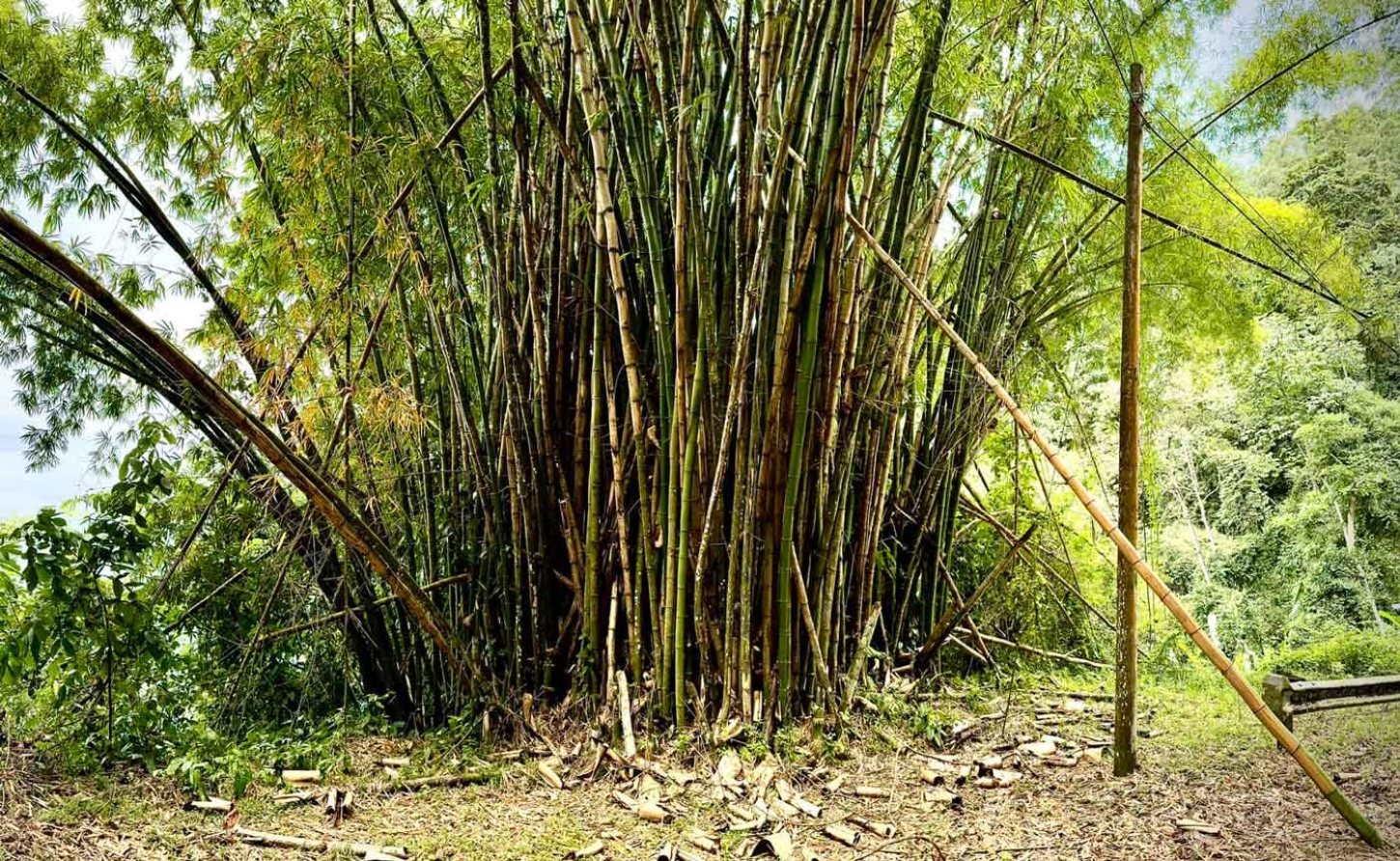JAMAICA | GREEN GOLD ABANDONED: Is Jamaica Squandering its Bamboo Lifeline Amidst a Deepening Food Crisis?

KINGSTON, Jamaica May 3, 2025- By Lenworth Fulton - As more than half of Jamaicans go to bed hungry, an abundant natural resource with the potential to revolutionize local food production sits largely ignored, victim of institutional myopia and a baffling addiction to foreign imports.
Bamboo – Jamaica's ubiquitous green gold – could be the backbone of a grassroots food security revolution. This versatile plant, already woven into the fabric of Jamaican life as building material, fencing, and craft supply, stands poised to transform thousands of school yards and community spaces into productive food hubs. Yet agricultural authorities seem content to watch it sway uselessly in the Caribbean breeze.
"A staggering 55 percent of Jamaicans experienced mild to severe hunger between 2021 and 2023," warns the Food and Agricultural Organization, painting a picture of widespread malnutrition even as potential solutions literally grow wild across the island. The disconnect between abundant resources and empty stomachs represents not just a policy failure but a moral abdication.

Critics quick to dismiss bamboo cite its vulnerability to termites and boring insects – a legitimate but entirely solvable challenge. Boron-based solutions (using readily available Borax and Boric Acid) offer an excellent balance – relatively safe for applicators, deadly to insects and fungi, and applicable through simple soaking methods suitable even for small-scale operations.
Furthermore, traditional techniques like leaching starches by soaking in water, proper seasoning (drying), heat treatments or smoking, combined with smart construction practices like raising structures off the ground on concrete footings, all contribute significantly to durability.
The problem isn't bamboo's limitations; it's the failure to disseminate existing solutions.
Crucially, overcoming the termite challenge depends not just on the existence of these methods, but on accessible knowledge and its active dissemination – another ball seemingly dropped by key institutions.
Instead of being a disqualifying factor, termite susceptibility should be a catalyst for practical training and support systems, empowering Jamaicans to properly treat and utilize their native resources. This lack of focused effort to solve a known problem only deepens the puzzle of bamboo's underutilization.
This knowledge gap points an accusing finger at Jamaica's agricultural institutions. The College of Agriculture Science and Education, Knockalva Polytechnic, and research stations at Orange River, Bodles, and Montpellier should be incubators of innovation. Instead, they appear trapped in outdated thinking that dismisses practical, local solutions as "backward" while failing to address solvable challenges like termite control.
The Ministry of Agriculture, Fisheries and Mining bears particular responsibility for this institutional paralysis. Key agencies under its direction – the 4-H Clubs and Rural Agricultural Development Authority – have inexplicably failed to integrate bamboo construction and preservation techniques into community-level food production strategies. Each passing day of inaction deepens Jamaica's dependence on strained poverty alleviation programs like PATH.
The untapped potential is staggering. Across Jamaica lie thousands of school compounds and church properties with easy access to bamboo, serving the very communities most affected by hunger. These spaces – potentially 10,000 quarter-acre plots totaling 2,500 acres – could host 500 simple treated bamboo shade houses covering 225,000 square feet of growing space. Yet they remain conspicuously absent from government production incentive programs.
Current production figures expose the severity of Jamaica's nutritional deficit. FAO data shows Jamaica producing a mere 266,000 metric tonnes of vegetables annually – translating to approximately half a pound per person daily across three meals, woefully short of recommended nutritional guidelines. Jamaicans are literally starving themselves of proper nutrition while potential solutions grow untapped across the landscape.
In a small country where agricultural land and labor grow increasingly scarce, igniting the imagination of young people through technologically connected backyard greenhouses built with treated bamboo frames represents not just an opportunity but an imperative. The productive capacity of a single 150-by-50-foot greenhouse dwarfs that of traditional field cultivation, offering intensified yield on minimal footprint.
Widespread adoption of such bamboo-framed backyard greenhouses could substantially eliminate Jamaica's staggering $1.6 billion food import bill while simultaneously revitalizing the island's declining agricultural exports. This isn't merely about feeding mouths – it's about reclaiming economic sovereignty through intelligent use of native resources.
The path forward requires shattering boardroom complacency and embracing a grassroots food security model – one developed and owned by communities using readily available resources and the knowledge to make them last. Jamaica's green gold continues rustling in the wind, waiting for treatment and purpose. The question remains: Will those entrusted with the nation's agricultural future finally listen, or will they continue fiddling while stomachs rumble?
-30-

 En
En  Ar
Ar